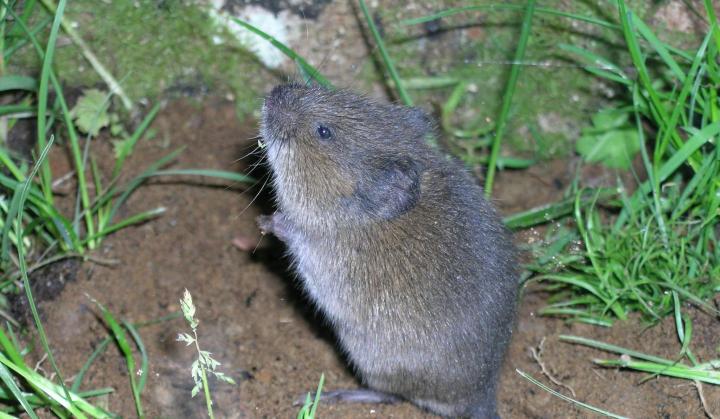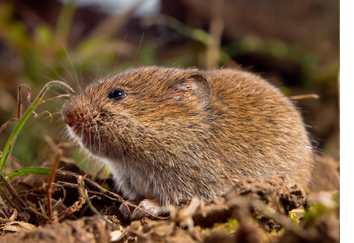Bid Farewell to Vole Damage: Expert Vole Control Solutions
Bid Farewell to Vole Damage: Expert Vole Control Solutions
Blog Article
The Ultimate Handbook for Vole Parasite Control: Professional Tips on Invasion Monitoring and Treatment
Within the realm of bug control, vole infestations provide an one-of-a-kind difficulty that requires a tactical technique. As we dig into the detailed globe of managing vole invasions, a wealth of specialist ideas and treatment options waits for those looking to redeem their rooms from these consistent bugs.
Determining Vole Infestations
When analyzing for vole infestations, keen monitoring of certain indicators such as runways and burrow systems is critical for accurate identification. Voles, small rats looking like computer mice, are known for the considerable network of surface area runways they produce in lawn or compost. These runways generally have a width of regarding two inches and are maintained clear of debris by the voles' constant usage. Furthermore, vole burrow systems are another essential indication of invasion. These delve entrances are roughly 1.5 inches in diameter and cause superficial passages that house nests and give protection for the voles.

Prevention Techniques for Voles
Reliable avoidance approaches for vole problems entail implementing positive measures to deter these tiny rodents from triggering damage to outdoor rooms. Furthermore, routinely maintaining and cutting the lawn lawn cut short can inhibit voles from developing nests.

Furthermore, preserving a clean yard with proper spacing between plants can help in reducing vole-friendly habitats. Avoid overwatering your yard or garden beds, as voles are attracted to damp environments. By implementing these avoidance techniques, you can properly discourage voles and guard your exterior rooms from problems.
Efficient Entraping Methods
Executing strategic trapping methods is vital in successfully handling vole populaces and minimizing damages to exterior rooms. When establishing traps for voles, it is vital to position them in energetic paths or tunnel entryways. Voles are understood to follow specific paths repetitively, making these prime places for capturing success. One efficient capturing technique is the usage of breeze catches, which are made to quickly and humanely kill voles upon activation. These traps must be examined routinely and reset as needed to ensure continual vole control. In addition, live traps can be made use of for those that like to release voles elsewhere after capture. When using online catches, it is vital to relocate the caught voles far from the trapping site to stop their return. By utilizing a combination of breeze traps and live catches strategically, house owners can efficiently lower vole populations and safeguard their outdoor areas from further damage.
Natural and Chemical Therapy Options
To properly take care of vole populations and mitigate damage in outside settings, discovering natural and chemical treatment alternatives is crucial. All-natural therapies use ecologically pleasant options that can assist regulate vole invasions without triggering harm to various other wild animals or plants.
On the various other hand, chemical treatments can offer effective control in cases of severe problems. Rodenticides containing zinc phosphide or anticoagulants like bromadiolone can be strategically positioned in vole runways or tunnel entrances. It is crucial to manage these chemicals with treatment to stop unintended harm to non-target varieties. Prior to carrying out any type of chemical treatment, it is a good idea to seek advice from a pest control expert to make certain secure and appropriate application methods. By integrating chemical and natural treatment options deliberately, vole problems can be handled successfully while minimizing ecological impact.
Maintaining a Vole-Free Atmosphere

Implementing natural vole repellents like castor oil-based products or predator pee can likewise aid in discouraging voles from attacking your home. you could check here These repellents work by developing an undesirable setting for voles, motivating them to look for sanctuary elsewhere. By integrating these preventative procedures and preserving a watchful approach to vole control, you my site can create a vole-free atmosphere that prevents invasions and promotes long-term parasite monitoring success.
Conclusion
To conclude, effective vole pest control requires a mix of determining invasions, implementing prevention methods, utilizing efficient capturing methods, and thinking about chemical or natural therapy options. By keeping a vole-free environment with these techniques, homeowners can properly take care of and lower vole populations on their building - vole pest control. It is very important to constantly keep track of for indications of infestation and take proactive actions to avoid future vole issues
By accurately identifying vole invasions early on, suitable bug control procedures can be applied promptly to reduce prospective damage to yards, gardens, and crops.
Having established approaches to deal with vole invasions with natural and chemical treatments, the focus currently moves to keeping a vole-free environment for long-term parasite control.Applying all-natural vole repellents like castor oil-based products or predator urine can also assist in hindering voles from attacking your residential or commercial property. By incorporating these precautionary steps and keeping a watchful strategy to vole control, you can produce a vole-free setting that inhibits problems and advertises long-term parasite administration success.
In final thought, successful vole parasite control requires a combination of identifying invasions, implementing vole pest control avoidance approaches, making use of efficient capturing techniques, and thinking about natural or chemical treatment options.
Report this page